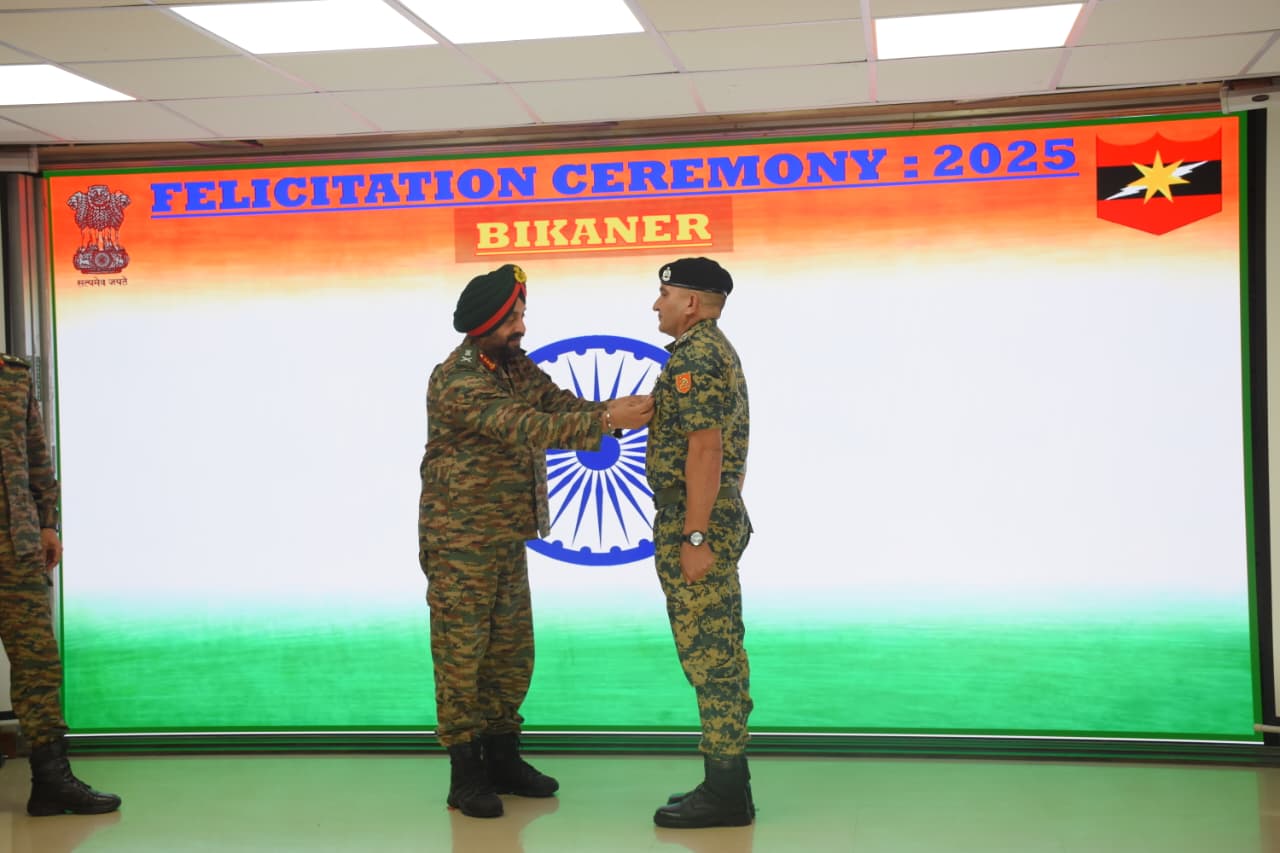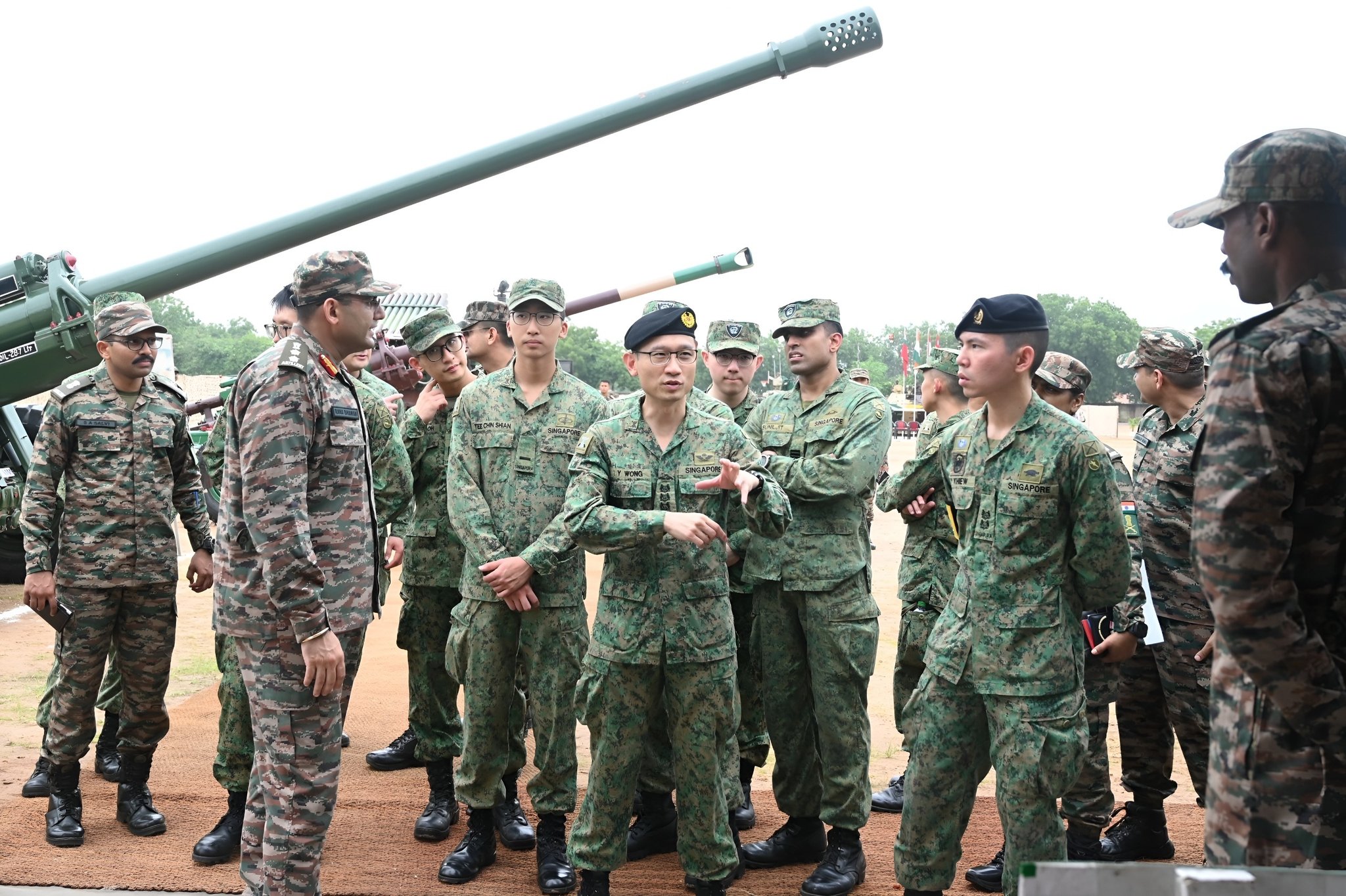Lt Gen Manjinder Singh Honors BSF Deputy Commandant Mahesh Chand Jaat with Commendation Card
In a notable gesture of inter-service recognition, Lieutenant General Manjinder Singh, General Officer Commanding-in-Chief of the Indian Army’s South Western…
Vice Admiral Sanjay Jasjit Singh Retires After 39 Years of Stellar Service to Indian Navy
Vice Admiral Sanjay Jasjit Singh officially retired today after completing 39 years of distinguished service in the Indian Navy. A…
Lt Gen V Sreehari Takes Over Command of Dakshin Bharat Area from Lt Gen Karanbir Singh Brar
In a significant leadership change in the Indian Army, Lieutenant General V Sreehari has taken over as the new General…
Vice Admiral K Swaminathan Takes Over as Western Naval Commander in Ceremonial Parade at INS Shikra
Vice Admiral Krishna Swaminathan, AVSM, VSM, formally assumed command as the Flag Officer Commanding-in-Chief (FOC-in-C) of the Western Naval Command…
Indian Army’s Bogra Brigade Showcases Equipment in Excerise Bold Kurukshetra
The Bogra Brigade of the Indian Army organised an equipment display as part of the ongoing joint military exercise Bold…
Delhi-NCR to Host First-Ever Mega Mock Disaster Drill ‘Suraksha Chakra’ on August 1
In a landmark initiative to enhance emergency preparedness, the National Capital Region (NCR) will witness its first-ever mega-scale mock disaster…






